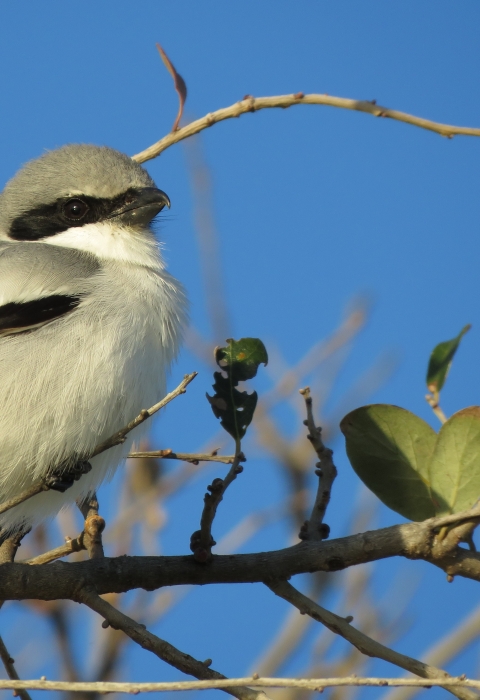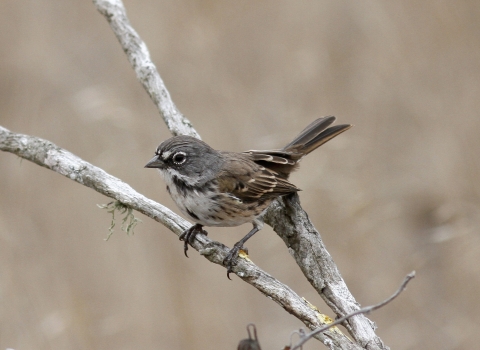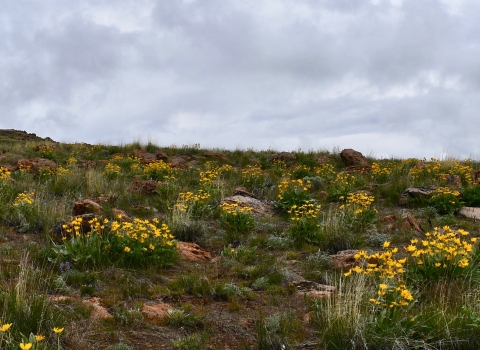The U.S. Fish and Wildlife Service is distributing over $59 million to state fish and wildlife agencies through the State Wildlife Grant Program to support the conservation of imperiled wildlife and their habitats across the nation. These grant funds are allocated to all states, commonwealths, U.S. territories, and the District of Columbia according to a congressionally mandated formula based on population size and geographic area. Since 2000, the SWG program has distributed over $1.29 billion to partner fish and wildlife agencies to address a variety of conservation needs such as research, fish and wildlife surveys, species restoration, habitat management and species monitoring.
"Partnerships with the nation’s fish and wildlife agencies are essential to achieving wildlife conservation and recovery successes that will benefit generations to come,” said Service Director Martha Williams. “State Wildlife Grant projects complement conservation benefits from investments made through President Biden’s Investing in America agenda. With funds from the Bipartisan Infrastructure Law Bipartisan Infrastructure Law
The Bipartisan Infrastructure Law (BIL) is a once-in-a-generation investment in the nation’s infrastructure and economic competitiveness. We were directly appropriated $455 million over five years in BIL funds for programs related to the President’s America the Beautiful initiative.
Learn more about Bipartisan Infrastructure Law , the Inflation Reduction Act, and these State Wildlife Grants, the Service continues to support locally led conservation efforts that are vital to long term success."
SWG program funds must be used to address conservation needs described within state plans and can support development and implementation of state programs and priority-setting for species and habitats. Most partner agencies will provide at least 25 percent in non-federal matching funds. State wildlife plan priorities benefit wildlife, especially at-risk or imperiled species, often referred to as species of greatest conservation need. This collaborative approach and focus on local-level conservation facilitates partnerships among private landowners, universities, industry and nonprofit conservation organizations, all working together to benefit wildlife and wild places.
Since the beginning of the SWG program, administered by the Service’s Office of Conservation Investment, partner fish and wildlife agencies have undertaken monumental conservation challenges and achieved many conservation milestones including:
- In Minnesota, the state’s Center for Aquatic Mollusk Programs is rebuilding populations of threatened and endangered native mussel species through a SWG-funded propagation program. In the state, 28 of 51 native mussel species are listed as endangered, threatened or of special concern; five are presumed extinct from state waters; and at least two more are in imminent danger of disappearing. The Department of Natural Resource program is propagating 10 different threatened and endangered species in a lab, including 14,000 federally endangered snuffbox mussels that will soon be released into the Mississippi River.
- In Colorado, where lesser prairie-chicken populations had declined to an estimated 50 birds by 2016, biologists from Colorado Parks and Wildlife and the Kansas Department of Wildlife and Parks have used SWG program funds to relocate 411 birds to repopulate the Sand Sagebrush Ecoregion, helping populations in southeastern Colorado rebound. Managed by the U.S. Department of Agriculture, birds relocated within the Comanche and Cimarron National Grasslands will have access to over 500,000 acres of potential habitat for the lesser prairie-chicken, a prairie grouse found in New Mexico, Texas, Colorado, Kansas and Oklahoma.
- In Indiana, the Shrubs for Shrikes partnership was created by Indiana Department of Natural Resources, with support from the SWG program, to improve habitat on private lands for the state-endangered loggerhead shrike. Since 2020, 18 private landowners have used the cost-share program to plant 70 cedar bushes that provide cover and nesting habitat for adult and juvenile shrikes and other native birds such as robins and mockingbirds. By targeting bird species that are declining, Indiana biologists can support and expand resilient populations that may help avoid the need for federal listing of the loggerhead shrike and other birds in the future.
Learn more about the SWG program and view the complete 2024 SWG program funding by state, commonwealth, territory, and district at www.fws.gov/program/state-wildlife-grants.



